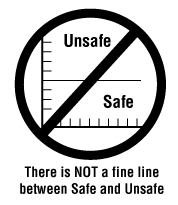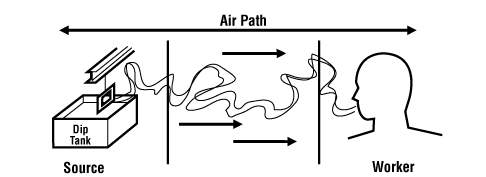Hazard and Risk - Hazard Control
On this page
What is a hazard control program?
Back to topA hazard control program consists of all steps necessary to protect workers from exposure to a substance or system, the training and the procedures required to monitor worker exposure and their health to hazards such as chemicals, materials or substances, or other types of hazards such as noise and vibration. A written workplace hazard control program should outline which methods are being used to control the exposure and how these controls will be monitored for effectiveness.
How do I know what kind of control method is needed?
Back to topSelecting an appropriate control method is not always easy. It often involves doing a risk assessment to evaluate and prioritize the hazards and risks. In addition, both "normal" and any potential or unusual situations must be studied. Each program should be specially designed to suit the needs of the individual workplace. Hence, no two programs will be exactly alike.
Choosing a control method may involve:
- Evaluating and selecting temporary and permanent controls.
- Implementing temporary measures until permanent (engineering) controls can be put in place.
- Implementing permanent controls when reasonably practicable.
For example, in the case of a noise hazard, temporary measures might require workers to use hearing protection. Long-term, permanent controls might use engineering methods to remove or isolate the noise source.
Why should a workplace implement hazard controls?
Back to topIn all cases, the employer has a duty of due diligence and is responsible for 'taking all reasonable precautions, under the particular circumstances, to prevent injuries or incidents in the workplace'.
Some hazards and their controls will be specifically outlined in legislation. In situations where there is not a clear way to control a hazard, or if legislation does not impose a limit or guideline, you should seek guidance from occupational health professionals such as an occupational hygienist, ergonomist, engineer, or safety professional about what is the "best practice" or "standard practice" when working in that situation.

Figure 1
Remember!
A legal limit or guideline (such as an occupational exposure limit) should never be viewed as a line between "safe" and "unsafe". The best approach is to always keep exposures or the risk of a hazard as low as possible.
What are the main ways to control a hazard?
Back to topThe main ways to control a hazard include:
- Elimination: remove the hazard from the workplace.
- Substitution: replace the hazard (e.g., hazardous products, machines, etc.) with a less hazardous one.
- Engineering Controls: includes designs or modifications to plants, equipment, ventilation systems, and processes that reduce the source of exposure.
- Administrative Controls: controls that alter how the work is done, including timing of work, policies and other rules, and work practices such as standards and operating procedures (including training, housekeeping, equipment maintenance, and personal hygiene practices).
- Personal Protective Equipment: equipment worn by individuals to reduce exposure, such as contact with chemicals or exposure to noise.
These methods are also known as the "hierarchy of controls".
For more information, please see the OSH Answers document Hierarchy of Controls.
Where are controls used?
Back to topControls are usually placed:
- At the source (where the hazard "comes from").
- Along the path (where the hazard "travels").
- At the worker.

Figure 2
The best strategy is to control the hazard at its source. Control at the source and control along the path are sometimes also known as engineering controls.
Why is it important to monitor and review your hazard control program and methods?
Back to topIt is important to monitor both the hazard and the control method to make sure that the control is working effectively and that exposure to the hazard is reduced or eliminated.
Some tools include physical inspection, testing, exposure assessment, observations, injury and illness tracking, incident investigations reports, employee feedback or input, occupational health assessment and other methods.
Be sure to answer the following questions:
- Have the controls solved the problem?
- Is the risk posed by the original hazard contained?
- Have any new hazards been created?
- Are new hazards appropriately controlled?
- Are monitoring processes adequate?
- Have workers been adequately informed about the situation?
- Have orientation and training programs been modified to deal with the new situation?
- Are any other measures required?
- Has the effectiveness of hazard controls been documented in your committee minutes?
- What else can be done?
Adapted from the Occupational Health and Safety Committee Manual prepared by the Saskatchewan Government.
A review will identify areas that may need more improvement or refinement. It is important to know if all workplace hazards are identified, assessed and appropriately controlled. Communication about the hazards and how to control them must be done for all employees of the organization.
- Fact sheet confirmed current: 2023-10-31
- Fact sheet last revised: 2022-09-14

